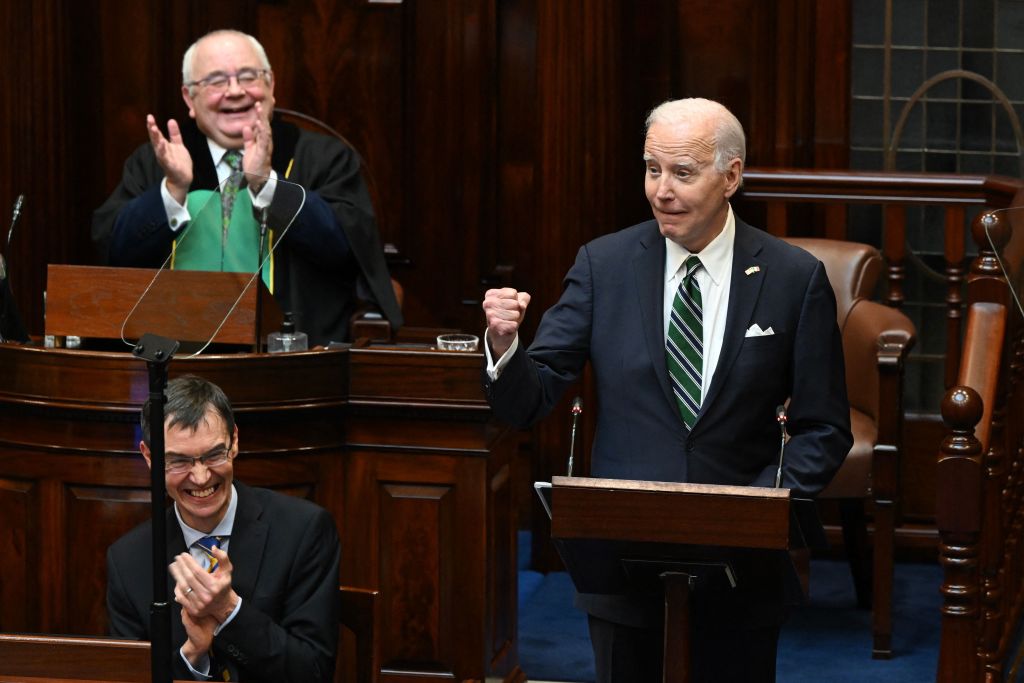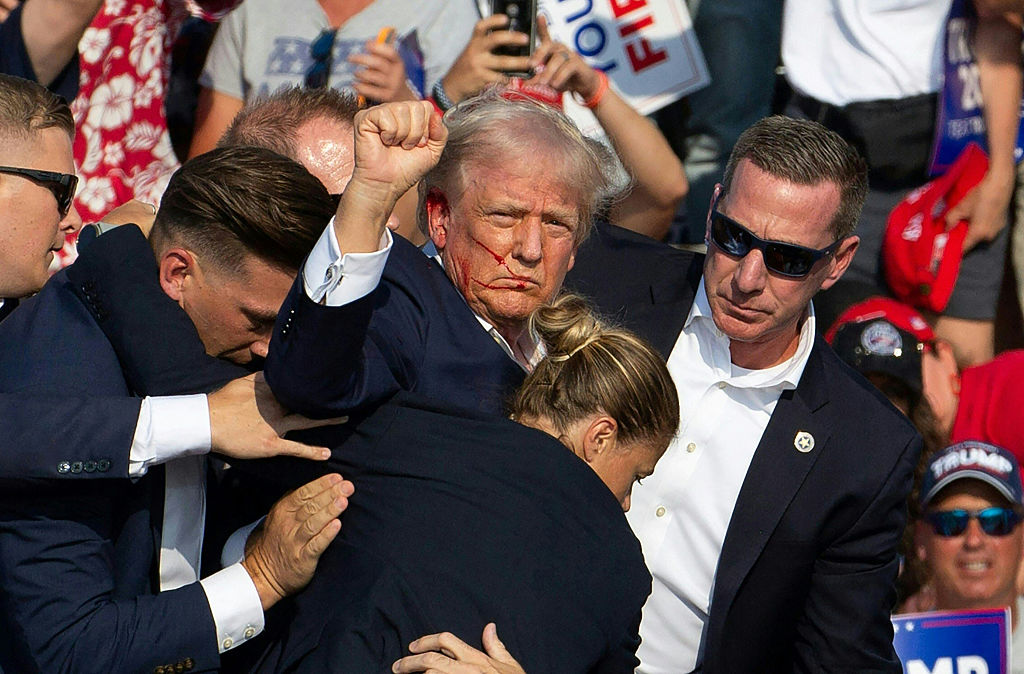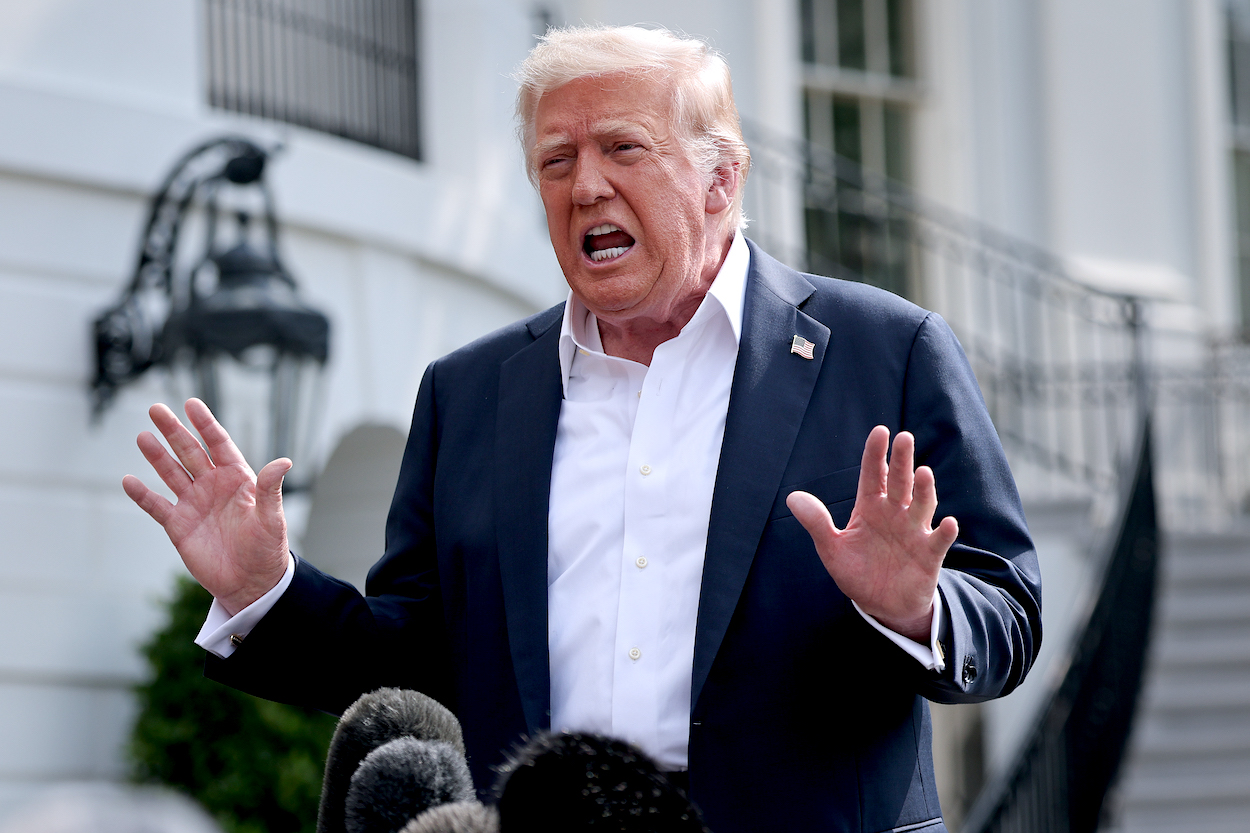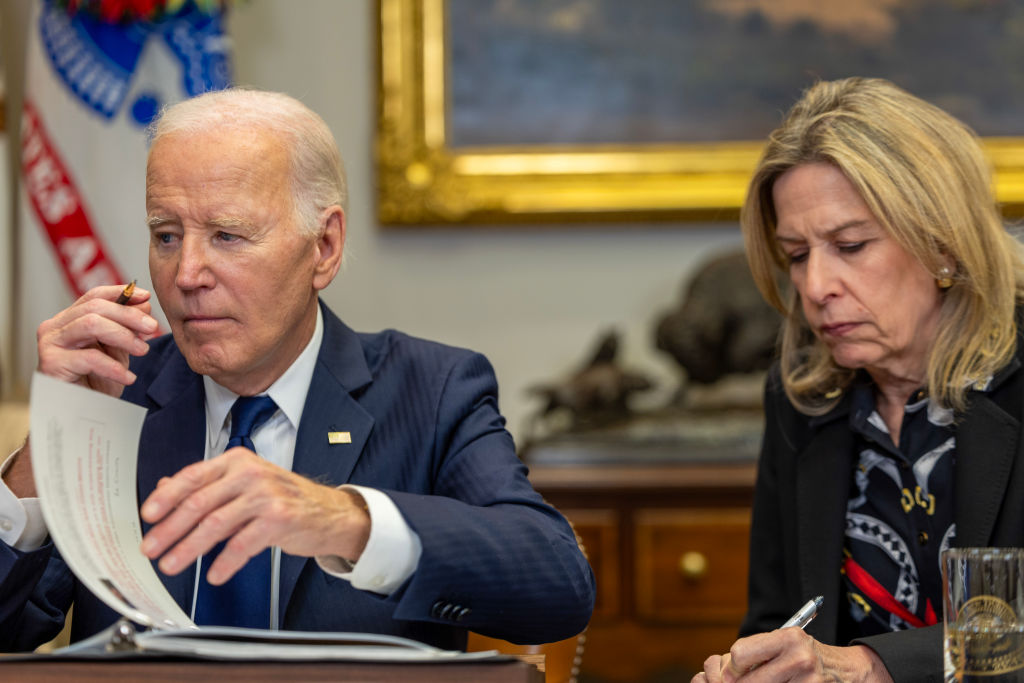President Biden is being an American tourist in Ireland this week. In comments to the Irish Parliament in Dublin today, the president touted the merits of rugby, a sport in which Ireland is currently the top-ranked side in the world, over the American brand of football.
“I’d rather have my children playing rugby now for health reasons than I would have them playing football,” the president said. “Fewer people get hurt playing rugby.”
Biden is a rugby enthusiast, having played while at college at Syracuse. He made a point of video-calling the Ireland men’s team after their historic defeat of New Zealand in Chicago in 2021. (In the video, Biden’s brother James is sporting an Ireland hat and coat.)
But the president is demonstrating his naiveté about the head injury risks of the sport. Much like football, a huge debate has been raging about concussions and CTE in the rugby world for the last decade.
To quote some recent examples: former Wales captain Ryan Jones was diagnosed with early-onset dementia last year, age forty-one. “My world is falling apart,” he told the Guardian. Hooker (that’s a position) Steve Thompson won the World Cup for England in 2003: he can’t remember doing so, and was also diagnosed with early-onset dementia, age forty-three. Ireland and Ulster player Iain Henderson recounted getting concussed in a 2018 match to the Irish Examiner: “I went into a lineout and went to call it and I just couldn’t remember any calls. Literally went into the huddle and I paused for ten seconds. I think it was Andy Warwick asked ‘what do you want to call’ and I was just looking at the ground. I couldn’t even think of the simplest lineout call and I was just standing there, and Big Al O’Connor said ‘I think we’ll do this one,’ and I went into the lineout and still couldn’t think of it.”
Rugby used to be thought of as a game for all body types: a slender, fast person could play on the wing; a squat, tubby gent with no neck would fit nicely in the front row; a short, quick-thinking lad could be useful at scrum-half. But since rugby union turned professional in the Nineties, players focused more on their physicality: building muscle, losing fat. As a consequence, collisions and contact became more dangerous — and in the years since, the rules of rugby have been modified to reflect this, with stricter penalties for reckless play that could lead to head injuries.
In this month’s edition of our magazine, Kevin Cook cites “plenty of evidence” that the writer Ernest Hemingway had suffered from CTE:
At sixteen, he was knocking heads as a leather-helmeted lineman for the Oak Park High School football team in Illinois. He wrote an English-class report about hard-hitting football.
Two years later, during World War One, he was an eighteen-year-old ambulance driver in France. A mortar shell exploded a few yards away, killing two soldiers who were standing nearby. Hemingway was blown off his feet, knocked unconscious with wounds to his legs and his head.
In 1928, after a boozy night with Archibald MacLeish, Hemingway took a bathroom break. Reaching for the chain that flushed the toilet in his Paris apartment, he accidentally tugged the cord that operated a skylight. The skylight crashed down onto his head, leaving him with what one report calls “a traumatic head injury” as well as the horseshoe-shaped scar on his forehead that he carried for the rest of his life.
During World War Two, photographer Robert Capa threw a London party in Hemingway’s honor. Refreshments included ten bottles of scotch, eight bottles of gin, a case of Champagne and a magnum of brandy. When the liquor ran out, they designated a driver who was “no drunker than Hemingway.” The driver crashed into a water tank, sending Hemingway into the windshield headfirst, hard enough to crack the windshield. He survived with a concussion and a head wound that took fifty-seven stitches. After that he reported double vision, memory lapses and headaches that came “in flashes like battery fire.”
Given Biden’s rugby past and his more recent pattern of gaffes that raise questions about his mental acuity — on this trip, he mixed up the New Zealand All Blacks rugby team with “the black and tans” — it seems fair to wonder how rigorously the president has been assessed for the same condition.
In the interest of transparency, I should point out that I’ve been concussed playing both sports: rugby as a fourteen-year-old, and flag football about three weeks ago, due to my extraordinary commitment to tackling. Take it from me: players of both have a significant risk of head injury.
Now, where was I?

























